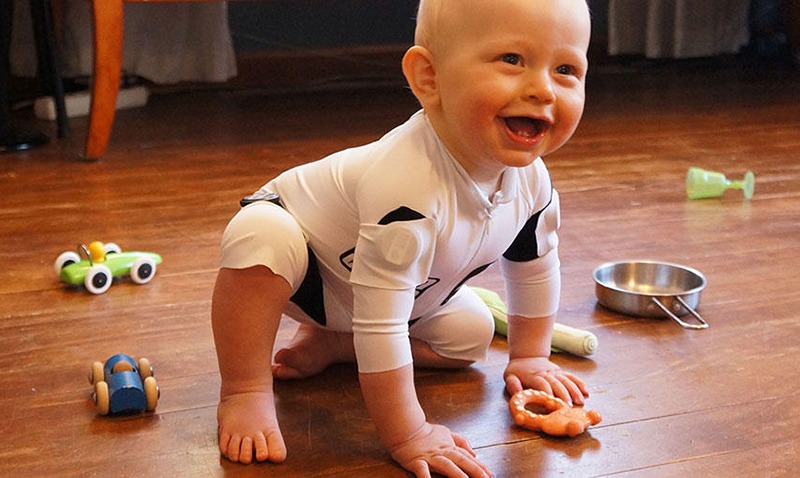Two academic institutions have developed smart technology for remote monitoring of babies.
Researchers from the University of Helsinki have developed a smart jumpsuit, or a garment that accurately measures the spontaneous and voluntary movement of infants from the age of five months. Details on their motility help in assessing abnormal neurological development, among other things.
Read more CPI, ItoM Medical and Blumorpho Working on Next Gen Smart Vest for Children with Asthma
Previously, it wasn’t possible to quantitatively track children’s spontaneous motility in their natural environment. Instead, children have been primarily qualitatively assessed at the physician’s or physiotherapist’s practice, which requires taking into account the fact that the infant’s behavior in the practice setting does not necessarily entirely match that seen at home, reports Miia Soininen in University of Helsinki News.
“The smart jumpsuit provides us with the first opportunity to quantify infants’ spontaneous and voluntary movements outside the laboratory. The child can be sent back home with the suit for the rest of the day. The next day, it will be returned to the hospital where the results will then be processed,” explains Sampsa Vanhatalo, professor of clinical neurophysiology at the University of Helsinki.
Vanhatalo says that the new analysis method quantifies infant motility as reliably as a human being would be able to do by viewing a video recording. After the measurement, the infant’s actual movements and physical positions will be known to the second, after which computational measures can be applied to the data.

Meanwhile, researchers at MIT have been working on a new smart diaper embedded with a moisture sensor that can alert a caregiver when a diaper is wet. When the sensor detects dampness in the diaper, it sends a signal to a nearby receiver, which in turn can send a notification to a smartphone or computer, reports Jennifer Chu in MIT News.
The sensor consists of a passive radio frequency identification (RFID) tag, that is placed below a layer of super absorbent polymer, a type of hydrogel that is typically used in diapers to soak up moisture. When the hydrogel is wet, the material expands and becomes slightly conductive — enough to trigger the RFID tag to send a radio signal to an RFID reader up to 1 meter away.
Read more Raybaby – World’s only AI-Powered Non-Contact Health & sleep Monitor for Babies
Pankhuri Sen, a research assistant in MIT’s AutoID Laboratory, envisions that the sensor could also be integrated into adult diapers, for patients who might be unaware or too embarrassed to report themselves that a change is needed.
“Diapers are used not just for babies, but for aging populations, or patients who are bedridden and unable to take care of themselves,” Sen says. “It would be convenient in these cases for a caregiver to be notified that a patient, particularly in a multibed hospital, needs changing.”












